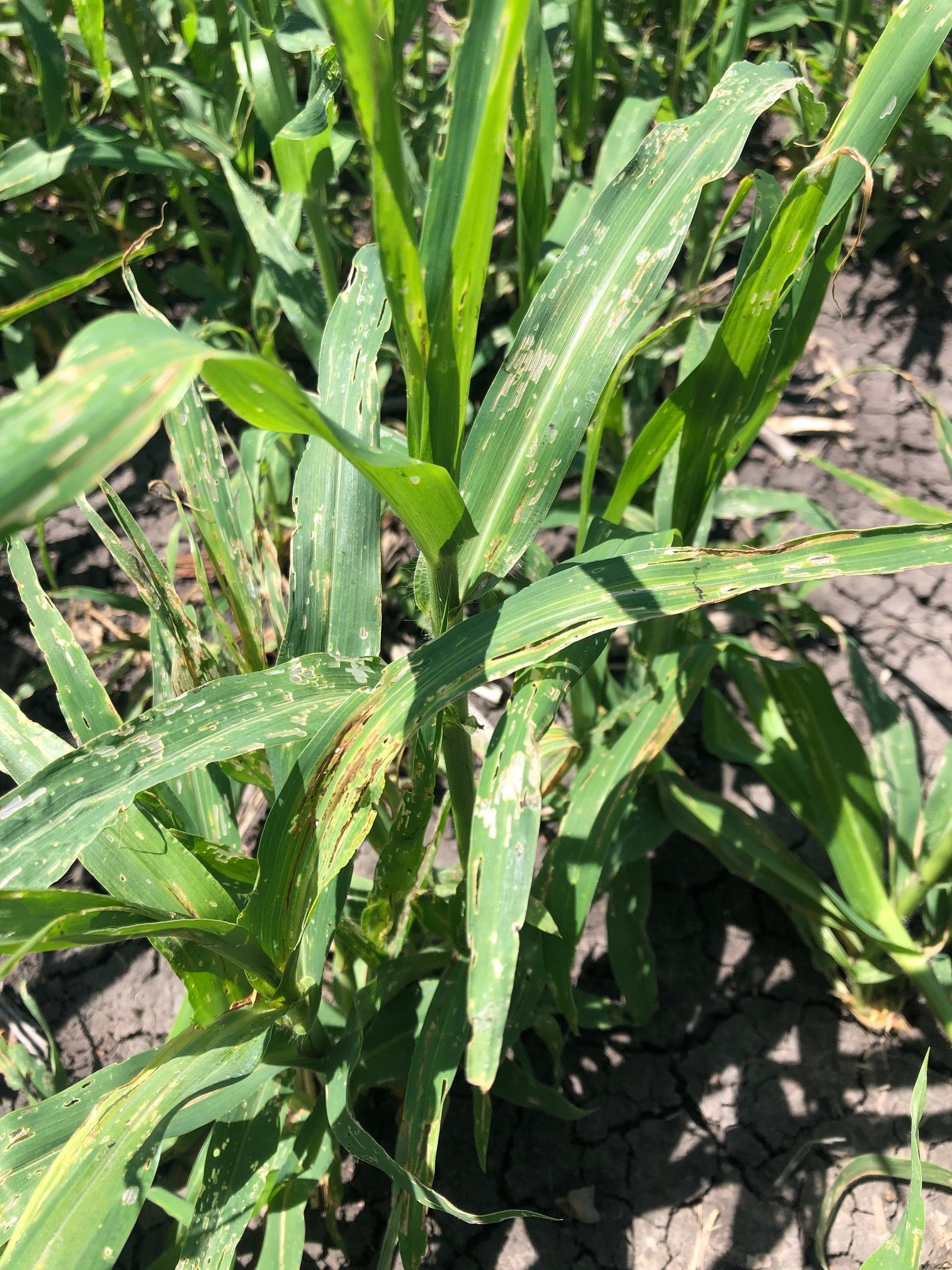Over the past week, the Queensland Department of Agriculture and Fisheries (DAF) has received a number of enquiries about leaf damage in millet crops. The culprit is a native beetle (Oulema spp.), a member of the chrysomelid (leaf beetles) family.
The larvae of the beetle are doing the leaf feeding. They are small, slimy-looking grubs with a hunched appearance.
Fun fact: the slimy appearance is a result of them carrying their poo around on their backs to deter predators!

Oulema spp. larva and the windowing damage it causes.
Outbreaks of this beetle are associated with ‘wet’ periods. They are also attacking grasses, including pasture species and have been observed from the Queensland border to the Gilbert River region over the past couple of weeks.
Early damage appears as windows between the leaf veins and progresses to holes in the leaves.

Example of the damage to millet (Photo supplied by Russell Wood)
Last week the damage reported was relatively minor, confined to a few plants or scattered plants in the crop. This week, the reports are of more extensive damage with significant ‘defoliation’ of plants. This suggests that the beetle larvae are maturing and consuming their maximum intake, and will probably start to pupate soon (and the damage will cease as the beetles only go though one lifecycle per year). Damage may continue if there are younger larvae still feeding, or there have been successive egg laying events in the crop.
As a very occasional pest of crops, there has been no work on thresholds or control. Natural enemies reported in other countries for the larvae of Oulema spp. include ladybird beetles, predatory bugs and spiders.
A fully grown larva is about 5 mm long. When monitoring an affected crop, carefully assess the size of larvae and determine if the population is uniform or made up of a range of sizes. Larval size is the best guide of whether the damage may continue – lots of smaller larvae means they will be there for longer. Consider whether the crop is likely to be impacted significantly (in terms of growth or subsequent yield) by the level of defoliation that it is experiencing.
